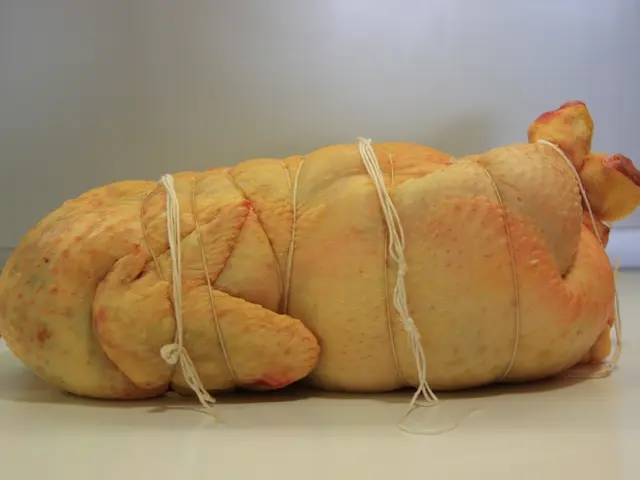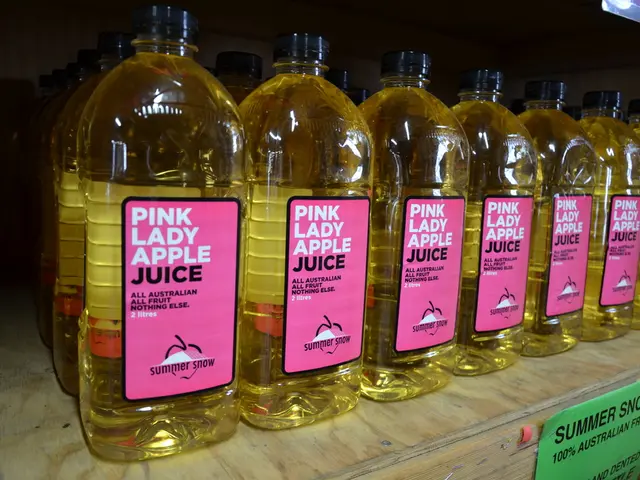Nutrient-Rich Greens: Organic Soil Boosters
Out there in the world of plants, there are three essential nutrients that plants can't live without - nitrogen, phosphorus, and oh yeah, potassium! This fantastic trio is like the holy trinity for plants, helping them suck up nutrients from the soil and keep frost, drought, diseases, and pesky critters at bay. If you're looking for some natural ways to add potassium to your soil, you're in luck! There are a bunch of plants, organic sources, and cool methods to help you out. Get ready to learn about potassium powerhouses like comfrey, dandelion, bracken fern, coffee grounds, banana peels, wood ash, kelp meal, and seaweed. But remember, before you start tossing stuff in your soil, get your soil tested to make sure you're not overdoing it and causing your plants to grow like stunted Schwarzeneggers.
| Superstar Plants and Materials | Preparation Tutorial || --- | --- || Comfrey Liquid Manure | Mix 2-4 pounds of comfrey leaves with 5 gallons of water and let steep for 2 weeks. || Dandelion Liquid Manure | Soak 4 pounds of dandelion flowers and leaves in 5 gallons of water for 2 weeks. || Bracken Fern | Simmer 10 pounds of fresh bracken fern or 2 pounds of dried fern in 2.5 gallons of water for 3 hours, then strain(optional). || Coffee Grounds | Sprinkle directly on soil or mix into compost. || Banana Peels | Chop up banana peels and add to soil, dehydrate and grind before adding to soil, or make banana liquid fertilizer by soaking chopped peels in water for 2-4 weeks and then blending (this process extracts potassium). || Wood Ash | Apply 1-2 pounds per 100 square feet, being mindful of soil pH and plant preferences. || Kelp Meal | Spread around the base of plants, shrubs, and flowers or mix into soil or potting plant medium. || Seaweed | Soak for 2-3 weeks, mix1/4 cup of kelp meal with 1 gallon of water, or use as a mulch around the base of plants. |
Here's What You Need to Know About Banana Peels, Kelp Meal, Wood Ash, and Seaweed
Banana Peels
Got some brown bananas sitting on your counter? Don't let them go to waste! You can use banana peels to add potassium straight to your soil. Here are a few super simple methods:
- Chop them up and add them directly to the soil.
- Dehydrate and grind them, then add to the soil.
- Soak chopped peels in water for 2-4 weeks, then blend the liquid and give it to your plants.
- Make banana tea by chopping the peels into small pieces, combining with water, and letting it sit for 2-3 days.
Comfrey Liquid Manure
The Magic of Soil in Plant Life
2-4 pounds of comfrey leaves, 5 gallons of water
You might want to check out...
Kelp Meal
Dandelion Liquid Manure
If you haven't heard of kelp yet, it's high time you met this awesome seaweed. For hundreds of years, it's been used as an accessible and effective fertilizer, and modern science has refined it even further. Kelp is packed with over 60 essential minerals, chelated minerals, auxins, gibberellins, cytokinins, trace minerals, and mannitol, a natural sugar that helps break down micronutrients for plant cells.
4 pounds of dandelion flowers and leaves, 5 gallons of water
When you use kelp meal as a fertilizer, great things happen:
- Faster seed germination
- Improved success rate of cuttings
- Encouraged rooting
- Boosted resistance to disease
- Increased color of flowers and flavor of fruits and roots
- Increased amounts and size of flowers
- Improved resistance to insects and other parasites
- Balanced soil and prevented nutrient deficiencies
Bracken Fern
When spreading kelp meal, it's best to apply around the base of plants, shrubs, and flowers, or use it as a potting plant medium or mix it directly into the soil. The application rate is around one pound of kelp meal for 100 sq. ft. of soil, and it begins releasing nutrients after about four months.
10 pounds of fresh fern or 2 pounds of dried fern, 2.5 gallons of water
The Secret to Jade Planting: Compatibility with Succulent Soil
You might want to check out...
Coffee Grounds
Wood Ash
Sprinkle directly on soil or add to compost
If you've got a compost heap and you mix in wood ash, you can create some top-notch alkaline compost! This makes an excellent mulch for ornamental plants and veggies, assuming your plants don't require acidic soil (like raspberries, rhododendrons, or fruit trees). But remember, it's essential to ensure your wood ash comes from appropriate sources. So, no treated wood, waste oil, plastics, or garbage – that stuff should go in the council refuse collection.
Before applying wood ash, test your soil and soil pH to make sure it fits your plants. Limit applications to a maximum of 15 to 20 pounds per 1000 sq. ft., per year. Spread it evenly over the area and apply to moist soil whenever possible. Plus, make sure to wear protective clothing to avoid exposure to your skin, eyes, and respiratory system when handling wood ash.
Banana Peels
Unleash the Power of Hibiscus: Choosing the Right Medium
Bury in soil or add to compost
You might want to check out...
Dried Kelp
Wood Ash
Although dried kelp only contains small amounts of nitrogen, phosphorus, and potassium (NPK), it's still a fantastic source of valuable micronutrients, growth hormones, and vitamins. These parts help increase yields, improve soil structure, and boost frost tolerance. With kelp, you'll notice your plants are more resistant to pests and diseases, leading to a healthier garden overall.
1-2 pounds per 100 square feet
- Here's an easy kelp meal tea recipe: Mix 1/4 cup of kelp meal with 1 gallon of water and let it steep for 1-3 days, agitating it daily. This tea can be used to drench plants before transplanting to help with transplant shock. Similarly, use it as a soak for garlic before planting.
- Sprinkle a small handful of kelp meal around the base of squash plants early in the growing season to deter squash bugs.
- Use liquid kelp as a spray to increase yields and promote overall plant health.
- For veggie gardens and flower beds, apply 1-2 pounds of kelp meal per 100 square feet and mix into the top 3 inches of soil.
- For transplants, add 1 teaspoon of kelp meal per hole and mix with soil and water.
- To feed established plants, side dress 1-2 teaspoons of kelp meal per plant 1-2 times throughout the growing season to encourage plant growth.
- For container and houseplants, for new plantings, mix 1/4 pound of kelp meal per cubic foot of soil. For established plants, side dress 1-2 teaspoons of kelp meal per gallon of soil 1-2 times throughout the growing season.
By following these guidelines, you can effectively use dried kelp to add potassium to your soil and promote the healthy growth of your plants, whether in pots, the garden, or the great outdoors.
Kelp Meal or Seaweed
The Hidden Dangers of Roundup in Soil: What Gardeners Need to Know
A few handfuls of dried kelp meal or liquid seaweed spray
You might want to check out...
Seaweed: The Ultimate Guide
Sul-Po-Mag
Step 1: Gather Seaweed the Right Way
Check label for recommended amounts
If you're planning on collecting seaweed from the beach, make sure it's legal in your area. Many coastal areas have restrictions to protect their ecosystems.
Rinse the seaweed thoroughly to remove salt, sand, debris, and other contaminants. Some salt is tolerable, but too much can harm your plants. Harvest fresh seaweed instead of decomposing or dried varieties to ensure maximum nutrient content.
Granite Dust
Step 2: Seaweed Preparation
N/A
Chop or shred large pieces of seaweed into smaller fragments to increase surface area for microbes to work on, speeding up decomposition. If the seaweed is overly wet, lay it in the sun for a few days to dry out. This helps avoid a soggy compost pile and slows down the decomposition process.
Step 3: Layer Seaweed in Your Compost Pile
Greensand
The ideal ratio is 2-3 parts brown to 1 part green to maintain an optimal carbon-to-nitrogen ratio. Spread the seaweed evenly to avoid clumping.
5 pounds per 100 square feet
Step 4: Monitor Your Compost Pile
Turn your compost pile regularly and keep an eye on the moisture level. If the pile is too wet, add more dry materials like wood chips or straw.
Tips for Using Seaweed in Compost
- Don't overload on seaweed: Too much seaweed can create a slimy, overly wet pile, slowing down the decomposition process.
- Balance seaweed with other greens: Mix seaweed with kitchen scraps, grass clippings, or garden trimmings for variety.
- Compost in layers: Alternate layers of seaweed with browns to maintain airflow and prevent odor.
- Use freshwater rinse: If you're concerned about salt, rinse seaweed thoroughly before adding it to your compost.
Alternative Ways to Use Seaweed in the Garden
Soil Toil: A Step-by-Step Guide
You might want to check out...
In the realm of natural gardening, banana peels, kelp meal, wood ash, and seaweed make excellent additions to your soil. Banana peels can be chopped up and added directly to the soil, dehydrated and ground before use, or soaked in water for a potassium-rich fertilizer. Kelp meal, rich in over 60 essential minerals and growth hormones, can improve soil structure, boost frost tolerance, and foster healthier plants. Applying kelp meal around plants encourages faster seed germination, better rooting, and increased resistance to disease. Wood ash, when mixed into a compost heap, creates top-notch alkaline compost suitable for many ornamental plants and vegetables. It's vital to test your soil and soil pH to ensure compatibility before using wood ash. Seaweed is a fantastic source of valuable micronutrients, growth hormones, and vitamins. Besides using it in compost, seaweed can also be layered in your compost pile, making a great addition to the garden as it helps improve overall plant health.








